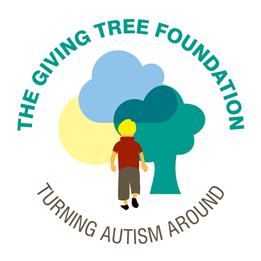What is Autism?
Autism Spectrum Disorder (ASD) is a neurodevelopmental disability that causes individuals to learn in a different way.

In more scientific terms, autism is said to affect information processing in the brain by altering how nerve cells and their synapses connect and organise; how this occurs is not fully understood, with a vast array of inconclusive research pointing at various genetic and environmental factors. Individuals affected by Autism are characterised by their impaired social interaction, verbal and non-verbal communication, and often by repetitive and restrictive behaviour. Autism is one of the three disorders on the Autism Spectrum Disorder, along with Asperger Syndrome (AD) and Pervasive Developmental Disorder (PDD-NOS).
Asperger Syndrome (AD) differs from the other disorders because language and cognitive development of individuals with this syndrome are not drastically impaired. Pervasive Developmental Disorder (PDD-NOS) is often referred to as atypical Autism, whereby the criteria for Autism Spectrum Disorder are not met.
Characteristics of PDD-NOS include severe and pervasive impairment in social interaction or verbal and non-verbal communication skills.
Signs, Symptoms and Diagnosis
 The primary features of Autism Spectrum Disorder are problems with social communication and interaction. Signs of ASD in pre-school children include:
The primary features of Autism Spectrum Disorder are problems with social communication and interaction. Signs of ASD in pre-school children include:
- Delayed speech development (less than 50 words, or no speech by age 2)
- Repetition of set words and phrases
- Speech that sounds monotonous or flat
- Preference in using single words to communicate, despite having the knowledge and ability to speak full sentences
- Unresponsive to their name being called despite having good hearing
- Rejecting physical contact such as cuddles initiated by a parent or carer (although children may initiate physical contact themselves)
- Reacting unusually negatively when asked to do something
- Being unaware of other peoples’ personal space
- Being unusually intolerant of others entering their personal space
- Being uninterested in interacting with other people, especially children their own age
- Disliking situations most children their age are meant to like, such as birthday parties
- Preferring to play alone
- Rarely using gestures or facial expressions
- Avoiding eye contact
- Displaying repetitive movements such as the flapping of hands, rocking back and forth or flicking their fingers
- Playing with toys in repetitive and unimaginative ways like lining up blocks in order of size or colour as opposed to using them to build something
- Preferring a familiar routine and getting upset if that is disrupted
- Displaying a strong dislike of certain foods based on texture and colour, as much as taste
- Unusual sensory interests – for example children with ASD may sniff toys, objects or other people inappropriately
For more information on signs and symptoms of ASD in school-age children, and other conditions associated with ASD click here
For more information on diagnosing ASD click here
